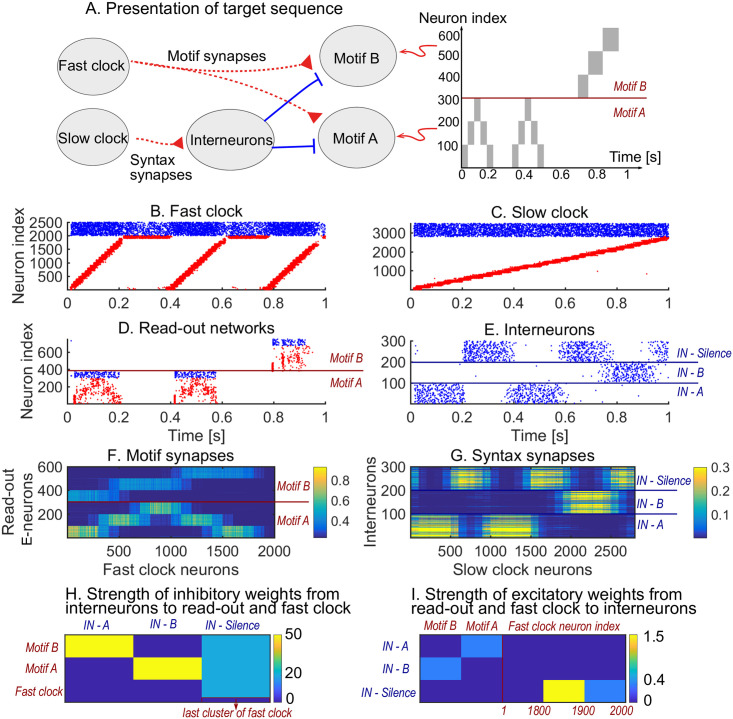Fig 2. Learning sequence AAB.
A. The target sequence is repeatedly presented to the read-out networks corresponding to motifs A and B. A and B are 200 ms long motifs. Between the motifs, we assume a silent period of 150 ms. B-E. Spontaneous dynamics after learning (50 target presentations). Red dots: excitatory neurons; blue dots: inhibitory neurons. B. The fast clock, controlled by interneurons 201 to 300. C. The slow clock, spanning and driving the entire sequence replay. D. The read-out networks, driven by the fast clock and controlled by the interneurons. E. The interneurons, driven by the slow clock. Neurons 1 − 100 inhibit motif B. Neurons 101 − 200 inhibit motif A. Neurons 201 − 300 shut down both the fast clock and read-out networks. F. The motif synapses show that the target motifs A (neurons 1 − 300 on the y-axis) and B (neurons 301 − 600 on the y-axis) are stored. The weights for motif A are stronger because there are two As in the target sequence and only one B. G. The syntax weights store the temporal ordering A-silent-A-silent-B-silent. H. Non-plastic inhibitory weights from the interneuron network to the read-out network and fast clock. I. Non-plastic excitatory weights from the read-out network and fast clock to the interneuron network.

